Flowers may be beautiful, but foliage with striking colors is what modern gardeners are more drawn to. In particular, Trees With Purple Leaves give landscapes vitality all year long. If you’re thinking about incorporating some purple into your garden, check out our list of top choices.
Different Types of Trees with Purple Leaves
Crepe Myrtle
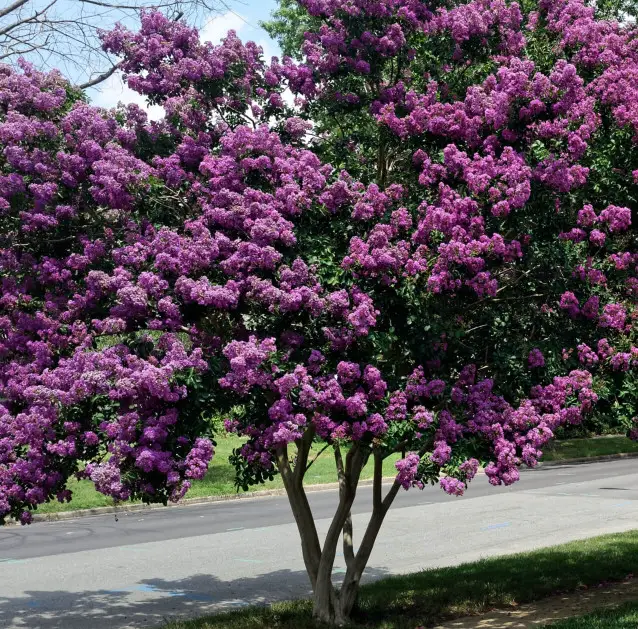
In USDA Zones 6–9, the Crepe Myrtle (Lagerstroemia indica) thrives. Its deep purple leaves and crinkled petals make it unusual. This tree, which originated in Asia, is highly valued for its beautiful qualities and for the way it brightens any landscape it is placed in.
Japanese Barberry
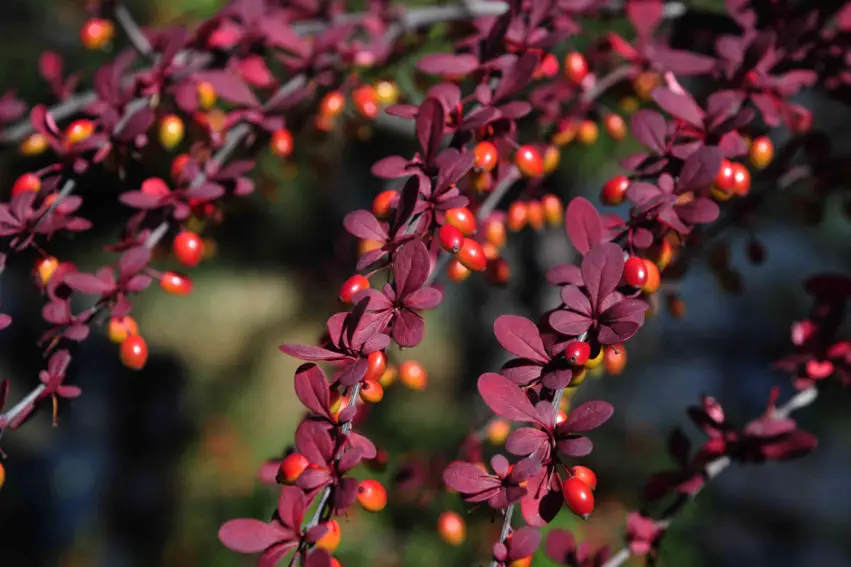
Grown in USDA Zones 5 through 9, the Japanese Barberry (Berberis thunbergii) is a stunning plant with deep purple leaf and slender, columnar growth. This tree is highly valued for its resilience, which includes resistance to diseases and pests, in addition to its beauty. For landscapes that aim for both longevity and aesthetic appeal, this tree is a great option.
Japanese Maple
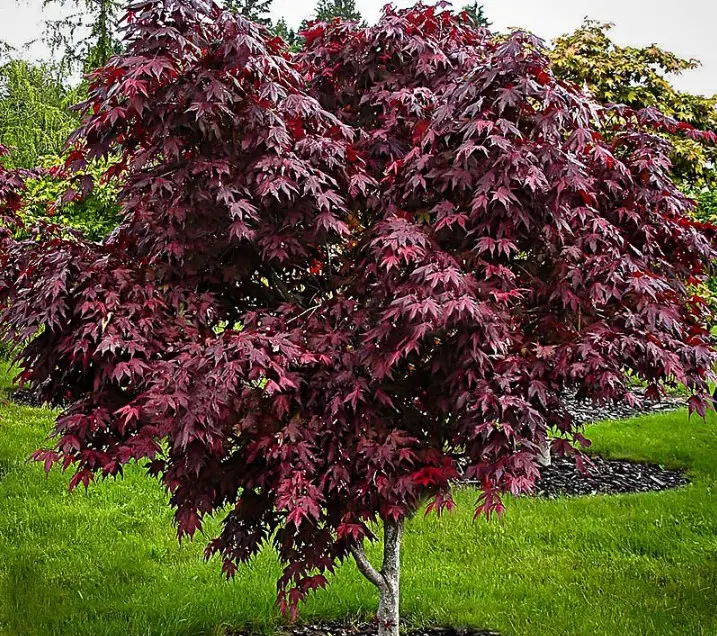
USDA Zones 5–9 are suitable for the Japanese Maple (Acer palmatum ‘Bloodgood,’ which has deep burgundy-red leaves that turn a vivid scarlet in the fall. This little tree, which grows at a height of 12 to 18 feet and takes little upkeep, is a popular choice for enhancing landscapes with grace and seasonal beauty.
Purple Catalpa
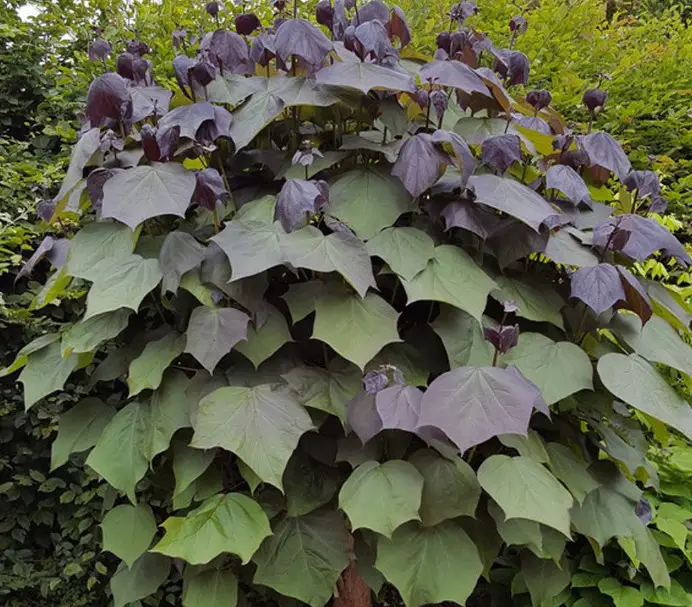
With heart-shaped leaves that have green tops and purple undersides, the Purple Catalpa (Catalpa x erubescens ‘Purpurea’) is a deciduous tree that grows well in USDA Zones 4–8. Its attractiveness is further enhanced in your landscape by the clusters of graceful white bell-shaped blooms it bears.
Purple Leaf Plum

The Purple Leaf Plum (Prunus cerasifera), native to western Asia and Iran, is a flourishing plant in USDA Zones 4 through 9. It is a highly valued ornamental specimen because of its vivid purple leaf, which sets it apart from normal green-leaved trees and adds a startling pop of color to landscapes and gardens.
Purple Leaf Sand Cherry
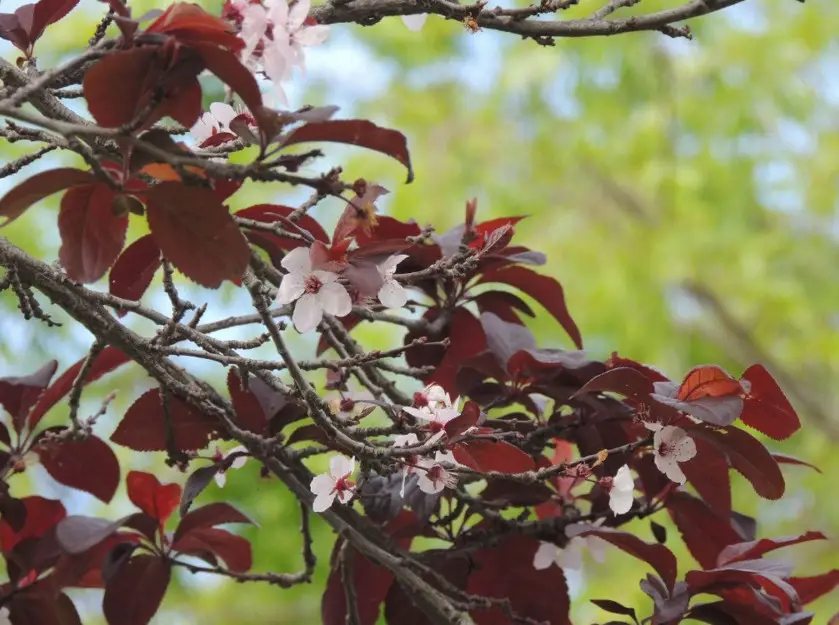
Grown in USDA Zones 2-8, the Purple Leaf Sand Cherry (Prunus x cistena) is a deciduous shrub with dark purple leaves that changes to fiery red in the fall. Its attractiveness is further enhanced by the pink blossoms it bears in the spring.
Purple Pony Cherry

Grown in USDA Zones 5 through 9, the Purple Pony Cherry (Prunus cerasifera) adds an air of elegance to landscapes with its beautiful splendor. It is a beautiful addition to any outdoor space, especially in spring when it fills gardens with delicate pink blossoms.
Redbud
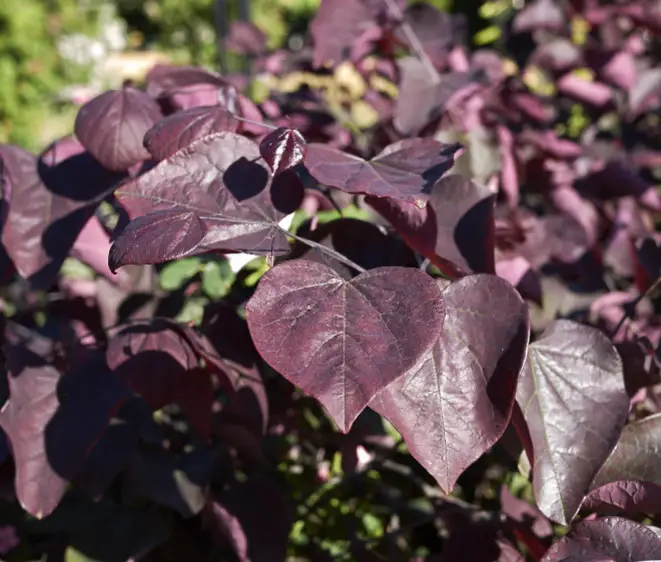
Native to eastern North America and growing in USDA Zones 4–9, the Redbud (Cercis canadensis ‘Forest Pansy’) is a tiny tree well-known for its reddish-purple leaves that eventually turn greenish-purple, giving the landscape a gradation of colors.
Red-Silver Crabapple
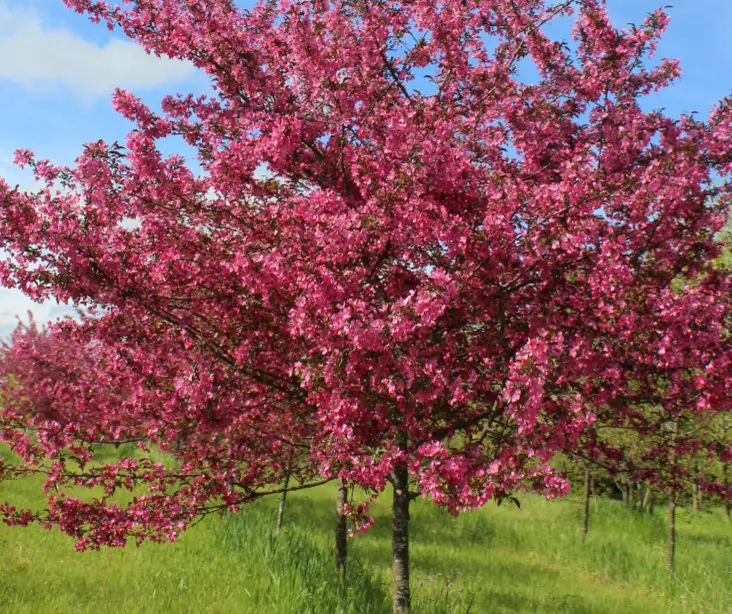
USDA Zones 4–8 are ideal for the Red-Silver Crabapple (Malus ‘Red Silver,’ which is hardy and adaptable, growing in a variety of soil types and climates). Because of its hardiness, it’s the perfect option for gardeners looking for beautiful yet low-maintenance plants to add to their landscapes.
Royal Empress
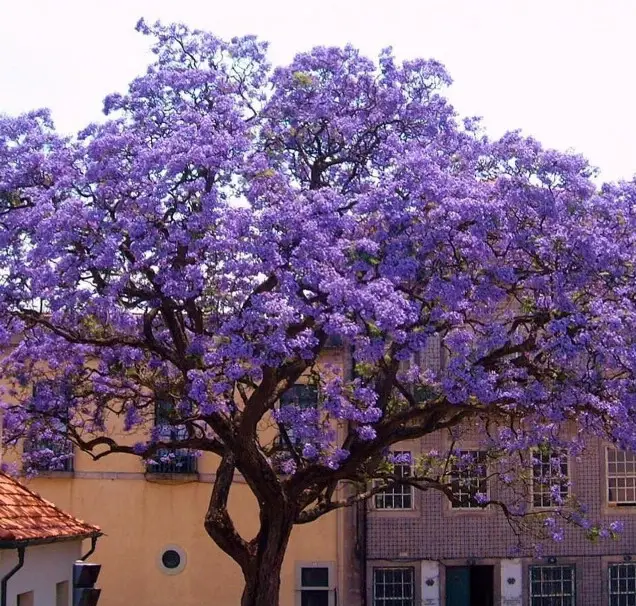
The huge, heart-shaped leaves of the Royal Empress (Paulownia tomentosa), which grows robustly in USDA Zones 7–10, are renowned for their high growth rate and rich mauve fall color. It is a lovely addition to your environment because it bears fragrant purple blooms, which further enhances its appeal.
Smoke Tree

Fall foliage of the Smoke Tree (Cotinus coggygria), which grows in USDA Zones 4–8, is distinctly purple in color and turns reddish-orange in fall. This tree lends mystery and beauty to any scene; it gets its name from its ethereal, smoke-like blossoms that bloom throughout the summer.
Black Gum
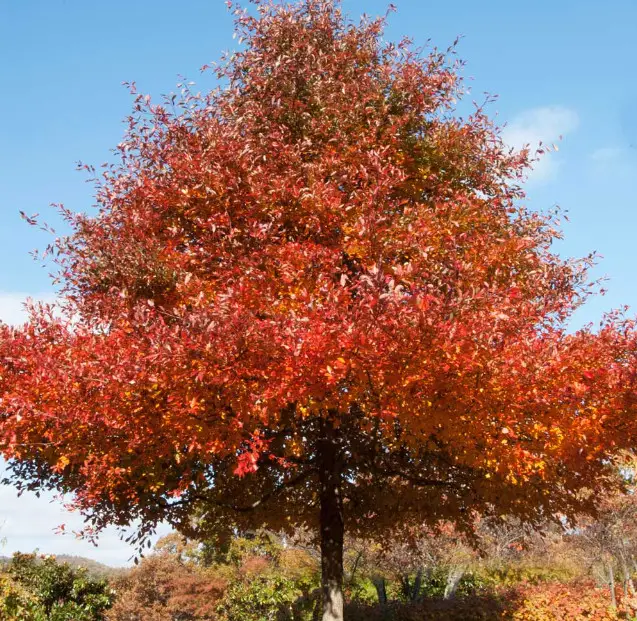
Native to eastern North America, the Black Gum (Nyssa sylvatica ‘Wildfire’) thrives in USDA Zones 3-9. Its leaves boast a striking dark purple hue, transitioning to vibrant red in autumn. Come fall, it yields small, dark blue fruits beloved by birds. This ornamental tree adds both beauty and biodiversity to its surroundings.
Black Elderberry
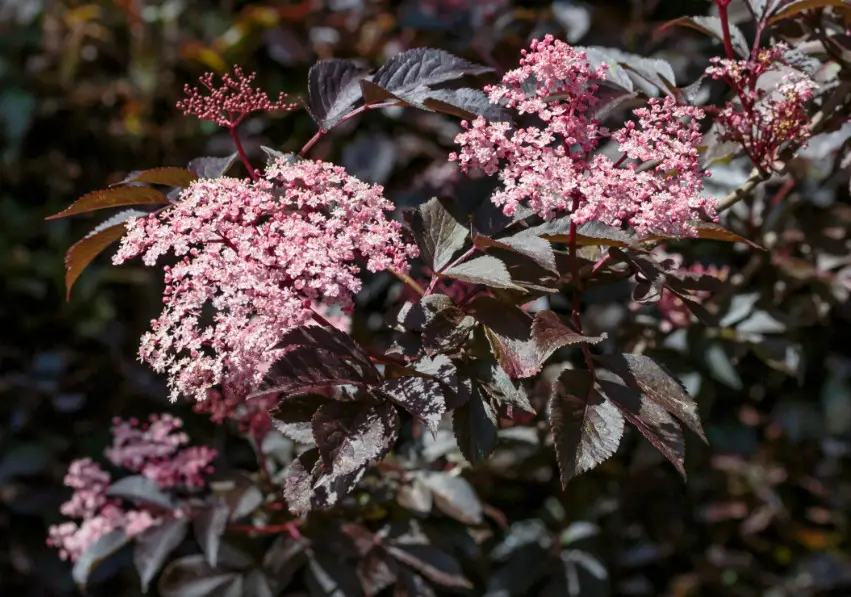
USDA Zones 6–8 are ideal for the Black Elderberry (Sambucus nigra ‘Purpurea’). Leaves are dark purple in the summer and turn golden in the fall. This graceful tree has clusters of little white or pink flowers in the summer. It enhances any environment with seasonal grandeur thanks to its gorgeous leaves and endearing blossoms.
Blireiana Plum
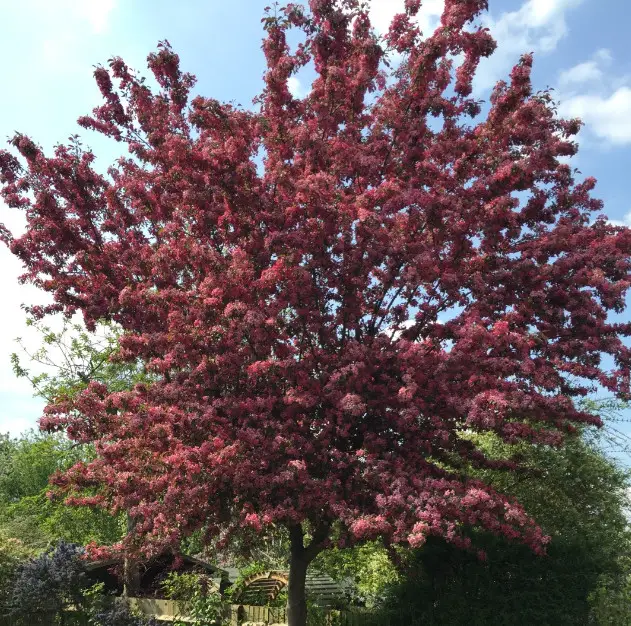
USDA Zones 5-8 are ideal for growing the Blireiana Plum (Prunus x blireiana). Its little stature displays deep purple leaves that change to flamboyant red or orange hues in the fall. Full of life in the spring, it adds color to the landscape by gracing gardens with clusters of pink or purple blossoms.
Cherry Plum
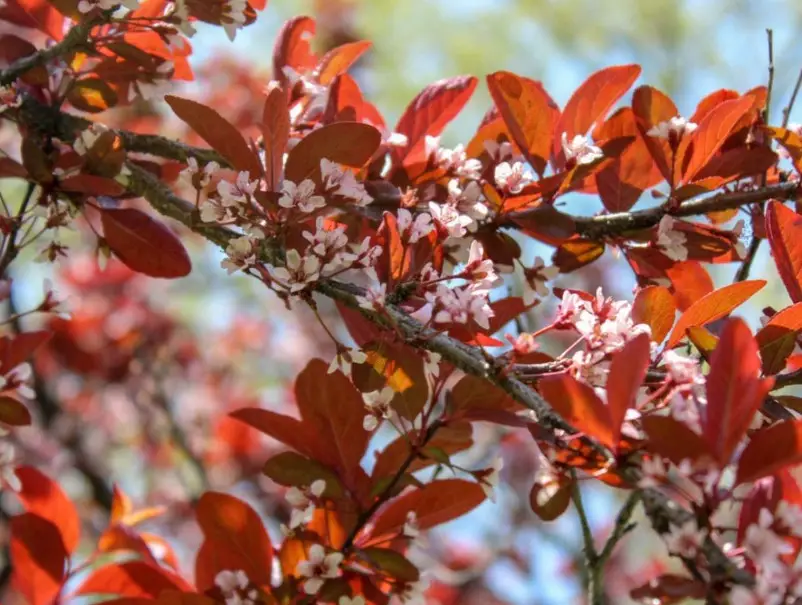
The Cherry Plum (Prunus cerasifera ‘Newport’), suited for USDA Zones 2-8, boasts purple foliage transitioning to fiery reds or oranges in autumn. Its beautiful display extends to spring, when clusters of white or pink flowers adorn its branches, enhancing its allure as a stunning ornamental tree.
Chinese Fringe Tree
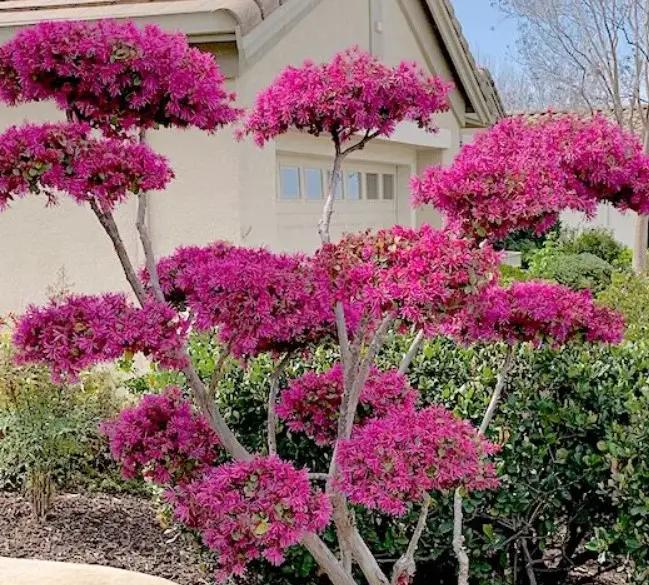
Originating in China and Korea, the Chinese Fringe Tree (Chionanthus retusus) grows well in USDA Zones 5 through 9. It has beautiful purple foliage that becomes golden yellow in the fall, creating a brilliant display of colors across the landscape. You can enjoy this adaptable plant as a huge shrub or as a tiny tree.
Crimson King Acer
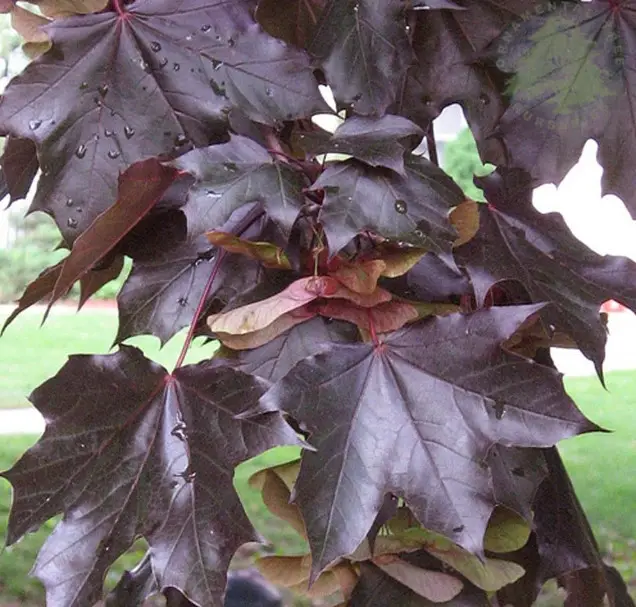
The Crimson King Acer (Acer platanoides ‘Crimson King’) reigns majestically in USDA Zones 3b-7b. Its deep purple foliage bestows a regal elegance upon any landscape, evoking the grandeur of royal attire worn by monarchs. This majestic tree stands as a symbol of splendor and sophistication in gardens and parks alike.
Copper Beech Fagus
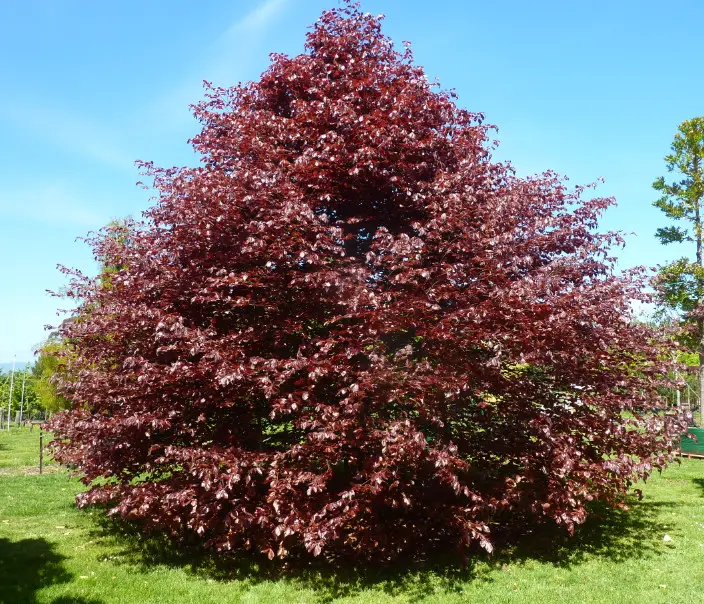
Plants growing in USDA Zones 4a-7 include the Copper Beech Fagus (Fagus sylvatica ‘Purpurea,’ which has rich purple leaves that becomes gorgeous copper in the fall. This remarkable purple-leafed tree, adorned with tiny green-yellow blooms in spring, provides a breathtaking display all year round.



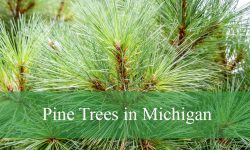
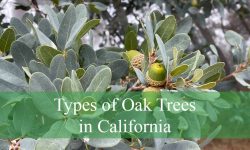
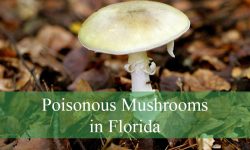
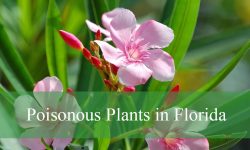
None of these are the purple leafed trees I have seen in Oregon and Washington. The leaves are as dark as port wine and large as maple leaves.